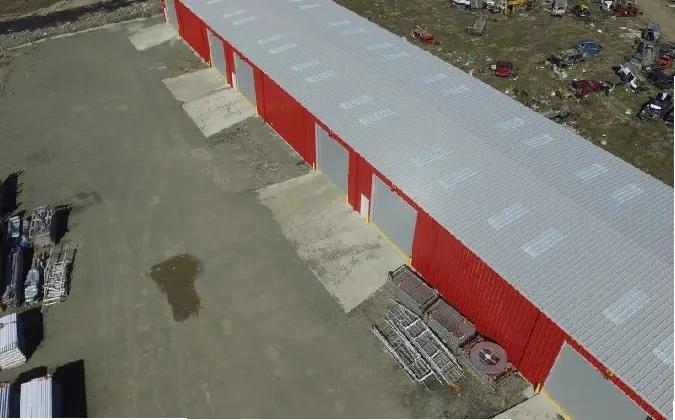- Afrikaans
- Albanian
- Amharic
- Arabic
- Armenian
- Azerbaijani
- Basque
- Belarusian
- Bengali
- Bosnian
- Bulgarian
- Catalan
- Cebuano
- Corsican
- Croatian
- Czech
- Danish
- Dutch
- English
- Esperanto
- Estonian
- Finnish
- French
- Frisian
- Galician
- Georgian
- German
- Greek
- Gujarati
- Haitian Creole
- hausa
- hawaiian
- Hebrew
- Hindi
- Miao
- Hungarian
- Icelandic
- igbo
- Indonesian
- irish
- Italian
- Japanese
- Javanese
- Kannada
- kazakh
- Khmer
- Rwandese
- Korean
- Kurdish
- Kyrgyz
- Lao
- Latin
- Latvian
- Lithuanian
- Luxembourgish
- Macedonian
- Malgashi
- Malay
- Malayalam
- Maltese
- Maori
- Marathi
- Mongolian
- Myanmar
- Nepali
- Norwegian
- Norwegian
- Occitan
- Pashto
- Persian
- Polish
- Portuguese
- Punjabi
- Romanian
- Russian
- Samoan
- Scottish Gaelic
- Serbian
- Sesotho
- Shona
- Sindhi
- Sinhala
- Slovak
- Slovenian
- Somali
- Spanish
- Sundanese
- Swahili
- Swedish
- Tagalog
- Tajik
- Tamil
- Tatar
- Telugu
- Thai
- Turkish
- Turkmen
- Ukrainian
- Urdu
- Uighur
- Uzbek
- Vietnamese
- Welsh
- Bantu
- Yiddish
- Yoruba
- Zulu
Nov . 06, 2025 20:07 Back to list
A steel airplane hangar requires robust security features to protect high-value aircraft, equipment, and supplies—making it a critical consideration for aviation businesses, private owners, and fleet operators. Hebei HongJi Shunda Steel Structure Engineering Co., Ltd., founded in 2000 with a 52,000-square-meter facility and a registered capital of USD$2.5 million, empowers wholesalers to deliver secure, customizable steel building hangar solutions. Specializing in steel structure design, manufacture, and installation (including warehouses, workshops, and specialized hangars), the company leverages a professional design team, quality-focused production crew, and cost-effective raw material management to integrate security into every steel airplane hangar project. Whether balancing steel hangar cost with essential safety measures or designing high-security systems for commercial fleets, HongJi Shunda ensures each steel building hangar meets aviation-specific security needs. For wholesalers catering to aviation clients, partnering with HongJi Shunda means accessing not just durable steel structures, but security solutions that protect assets and provide peace of mind.

Physical Security Features for Steel Airplane Hangars
- Reinforced Entry Points: The doors and access points of a steel airplane hangar are its first line of defense, and HongJi Shunda designs them with heavy-duty steel frames, anti-pry edges, and high-security locking systems. For large steel building hangar doors (e.g., bi-fold or sliding doors), the company uses thick-gauge steel panels and hydraulic locking mechanisms that prevent forced entry. Smaller access doors (for personnel or equipment) feature deadbolt locks and steel reinforcement plates—critical for deterring break-ins. For example, a commercial steel airplane hangar storing multiple private jets will benefit from reinforced sliding doors with remote-controlled locks, ensuring only authorized personnel can open them. Wholesalers can highlight this feature to clients, as it balances steel hangar cost with essential entry security.
- Perimeter and Wall Reinforcement: Steel airplane hangar walls and perimeters are reinforced to resist impact, cutting, or climbing. HongJi Shunda uses high-strength steel beams (up to ¼-inch thick) for wall frames and adds anti-climb features (e.g., angled steel brackets) to prevent unauthorized access over hangar walls. For outdoor steel building hangar perimeters, the company can integrate steel fencing (matching the hangar’s design) with barbed wire or electric deterrents—all while keeping steel hangar cost A military or government steel airplane hangar may require extra wall reinforcement (e.g., bullet-resistant steel panels), which HongJi Shunda can customize without compromising structural integrity. Wholesalers can emphasize this flexibility to clients with varying security needs.
Key Security Features and Steel Hangar Cost Considerations
|
Security Feature |
Details for Steel Airplane Hangar/Steel Building Hangar |
Ideal Client Scenarios |
HongJi Shunda’s Strength |
Wholesaler Value (Market Fit) |
|
Access Control Systems |
Keypad entry, keycard readers, or biometric scanners (for personnel access); integrated with hangar lighting/alarms |
Commercial aviation fleets, private jet owners, military steel airplane hangars |
Custom system integration; compatibility with existing security software |
Caters to clients needing authorized access management |
|
Surveillance Integration |
Pre-installed mounting brackets for security cameras; wiring for motion sensors and video recording systems |
Remote steel building hangar locations, commercial airports, fleet storage facilities |
Camera placement optimization (no blind spots); low-voltage wiring to reduce steel hangar cost |
Fits clients prioritizing 24/7 monitoring |
|
Fire Safety Systems |
Steel fire-rated walls; smoke detectors; sprinkler system integration (with heat-resistant steel piping) |
Steel airplane hangars storing fuel, maintenance chemicals, or vintage aircraft |
Fire-code compliance; use of fire-retardant steel coatings to lower long-term costs |
Appeals to clients needing fire protection for high-value assets |
|
Alarm and Monitoring Systems |
Intrusion alarms (connected to local security or police); vibration sensors (for detecting break-in attempts) |
High-value aircraft storage, remote steel building hangars, commercial aviation facilities |
Wireless alarm options (to reduce installation costs); 24/7 monitoring support partnerships |
Helps wholesalers balance security with steel hangar cost |
Security Customizations for Steel Building Hangars
- High-Security Locking Systems for Steel Airplane Hangars: HongJi Shunda offers customizable locking systems to match steel airplane hangar size and security needs—from basic key locks (for small private hangars) to advanced biometric locks (for commercial fleets). These systems are integrated into the hangar’s steel structure, ensuring they’re tamper-proof and durable. For example, a private owner’s steel building hangar may opt for a keypad lock (lower steel hangar cost), while a commercial airline’s hangar will use biometric scanners (for strict access control). The company also provides remote monitoring for locks, allowing clients to check access logs or lock/unlock doors via a mobile app—adding convenience without significant cost increases. Wholesalers can market these options to clients, as they let users tailor security to their budget.
- Environmental Security for Steel Airplane Hangars: Beyond theft prevention, steel airplane hangars need security against environmental threats like storms, floods, or extreme temperatures. HongJi Shunda reinforces hangar roofs with extra steel trusses (to resist high winds) and adds drainage systems (to prevent flood damage to aircraft). For cold climates, the company integrates insulation (with steel framing) to maintain stable temperatures—protecting sensitive aircraft components. These features are designed to be cost-effective, as they reduce long-term repair costs (offsetting initial steel hangar cost). A steel building hangar in a hurricane-prone region will benefit from wind-resistant roof design, which HongJi Shunda can customize to meet local building codes. Wholesalers can highlight this environmental security to clients, as it protects assets from natural disasters.
Balancing Steel Hangar Cost with Essential Security
- Prioritizing Must-Have Security Features: HongJi Shunda advises wholesalers to help clients prioritize security features based on asset value and risk—ensuring essential measures aren’t sacrificed to lower steel hangar cost. For example, a small private steel airplane hangar may focus on reinforced doors and basic alarms (lower cost), while a commercial hangar storing cargo planes needs access control, surveillance, and fire safety (higher priority). The company’s design team can create a “security hierarchy” to match steel hangar cost to needs, avoiding over-specification (unnecessary expenses) or under-security (risk of loss). Wholesalers can use this guidance to help clients make informed decisions, ensuring they get the best security value for their budget.
- Long-Term Cost Savings from Security Investments: While some security features add to initial steel hangar cost, they often reduce long-term expenses. For example, a fire safety system in a steel building hangar may cost more upfront but prevents costly aircraft damage from fires. Similarly, high-quality locks and access control reduce theft-related losses (which can be far more expensive than the initial security investment). HongJi Shunda provides clients with cost-benefit analyses, showing how security features save money over the hangar’s 50+ year lifespan. Wholesalers can emphasize these long-term savings to clients, as it positions security as an investment rather than an expense.
Steel Airplane Hangar FAQS
What Security Features Are Essential for a Small Steel Airplane Hangar (Low Steel Hangar Cost)?
For small, budget-focused steel airplane hangars, essential security features include: 1) Reinforced steel entry doors (with deadbolt locks); 2) Basic intrusion alarms (connected to a local security service); 3) Perimeter steel fencing (6-foot minimum); 4) Smoke detectors (for fire safety). HongJi Shunda can integrate these features at a manageable steel hangar cost, often adding just 10–15% to the base hangar price. Wholesalers can recommend these to private aircraft owners or small aviation businesses needing core security without overspending.
Can Steel Building Hangars Be Retrofit with Additional Security Features Later?
Yes—HongJi Shunda designs steel building hangars to be easily retrofitted with extra security features as needs change. For example, a basic steel airplane hangar can later add access control systems (using pre-installed wiring) or reinforced walls (matching existing steel framing). Retrofitting is often more cost-effective than building a new hangar, and the company’s team ensures modifications blend seamlessly with the original structure. Wholesalers can share this flexibility with clients, as it lets them start with lower steel hangar cost and upgrade security later.
How Does Security Integration Affect Steel Hangar Cost?
Security features add 10–30% to steel hangar cost, depending on complexity: 1) Basic features (locks, alarms) add ~10%; 2) Mid-tier features (access control, surveillance) add ~20%; 3) High-security features (biometrics, fire suppression) add ~30%. HongJi Shunda reduces costs by integrating security during design (avoiding retrofitting expenses) and using cost-effective steel materials. For example, pre-installing camera brackets during hangar construction is cheaper than adding them later. Wholesalers can help clients budget by breaking down costs for each security feature, ensuring transparency.
Are Steel Airplane Hangars More Secure Than Other Hangar Materials (e.g., Wood, Aluminum)?
Yes—steel airplane hangars are far more secure than wood or aluminum alternatives. Steel resists forced entry (e.g., cutting, prying) better than wood (which rots or splits) or aluminum (which bends easily). HongJi Shunda’s steel frames also support heavier security features (e.g., reinforced doors, surveillance systems) without structural strain. While steel hangar cost may be higher upfront, the long-term security benefits (fewer thefts, lower insurance premiums) often offset the difference. Wholesalers can highlight this to clients prioritizing asset protection.
Does HongJi Shunda Provide Security Consultations for Steel Airplane Hangars?
Absolutely—HongJi Shunda’s professional design team offers free security consultations for steel airplane hangar clients, including: 1) Risk assessments (based on location, aircraft value, and usage); 2) Custom security plans (matching steel hangar cost to needs); 3) Compliance guidance (meeting aviation security standards). The team also partners with security system providers to ensure seamless integration. Wholesalers can access these consultations to support their clients, ensuring each steel building hangar has the right security measures. To explore Hebei HongJi Shunda Steel Structure Engineering Co., Ltd.’s steel airplane hangar solutions, security features, and steel hangar cost guidance—plus bulk ordering and after-sales support—visit our company webpage today.
-
Bolted Connections in Steel Frame Warehouse
NewsNov.17,2025
-
Hay Storage in Farm Metal Buildings
NewsNov.17,2025
-
Advantages of a Steel Portal Frame Shed
NewsNov.17,2025
-
The Erection Process of a Steel Building Hangar
NewsNov.17,2025
-
Energy Efficiency of Steel Dome Garage Kits
NewsNov.17,2025
-
Fire Resistance of Kit Metal Garages
NewsNov.17,2025
Products categories
Our Latest News
We have a professional design team and an excellent production and construction team.












